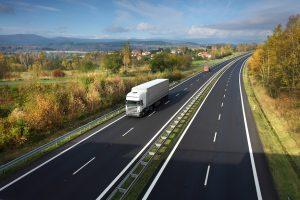 Back in September, the U.S. Department of Transportation issued a federal policy for automated vehicles to lay out a path for the safe testing and deployment of self-driving cars. According to the Department Secretary, “This policy is an unprecedented step by the federal government to harness the benefits of transformative technology by providing a framework for how to do it safely.”
Back in September, the U.S. Department of Transportation issued a federal policy for automated vehicles to lay out a path for the safe testing and deployment of self-driving cars. According to the Department Secretary, “This policy is an unprecedented step by the federal government to harness the benefits of transformative technology by providing a framework for how to do it safely.”
Part of the policy sets up a 15-Point Safety Checklist to “set clear expectations for manufacturers developing and deploying automated vehicles.” The NY Times did a piece outlining the areas defined in the 15 points, which include:
- Data Sharing: Storing data regarding these vehicles by carmakers and sharing with regulators.
- Privacy: Letting car owners know what kind of data is being stored.
- System Safety: Making sure the cars are engineered to respond safely to software malfunction, near crashes, loss of traction, and other risks.
- Digital Security: Having vehicles that are engineered with safeguards to prevent online attacks.
- Human-Machine Interface: Making sure carmakers can show that their vehicles can safely switch between autopilot and human control.
- Crashworthiness: Self-driving cars must meet the National Highway Traffic Safety Administration’s regular standards for “crashworthiness,” or prove that the vehicles are built to best protect occupants in a crash according to the guidelines.
- Consumer Education: Carmakers need to train their sales representatives and other staff members on how autopilot works so they can educate car dealers and other distributors.
- Certification: Any software updates or new driverless features must be submitted to the NHTSA.
- Post-Crash Behavior: Carmakers should be able to prove their cars are safe to use again after a crash.
- Laws and Practices: That automated cars should follow various state and local laws and practices that apply to all drivers
- Ethical Considerations: We often make ethical decisions while driving, such as should we protect the occupants or those outside the car in certain situations. So, carmakers need to consider the way a car is programmed to address ethical concerns.
- Operational Design: Self-driving cars should be equipped with what is similar to a manual that describes where, when and under what conditions a driverless system works.
- Detection and Response: The carmaker must show the car has been programmed to respond to normal driving situations like changing lanes and heeding traffic signals, but also prove that their cars can avoid big surprises and crashes.
- Fallback: The car should be able to change modes safely to real time driver mode when there is a technological malfunction.
- Validation: Automakers need to develop testing and validation methods for the technologies used in driverless cars. For example, their tests should include simulation, test track and on-road testing.
The policy also included a Model State Policy which suggests recommended policies for state governments to consider with a “goal of generating a consistent national framework for the testing and deployment” of self-driving cars. The policy also provides a section which discusses new regulatory tools and statutory authorities that policymakers may consider in the future.
At this point, the policy is merely suggestions as opposed to real regulations with legal force. It looks as though the policy is here to help the companies developing the vehicles to share their data, rather than enforce the companies to do so. According to an article from the Wall Street Journal, the “new guidelines are an endorsement by regulators of a safer future with cars driven by robots and not people.” However, the guidelines continue to give carmakers “wide latitude” according to a piece from the NY Times.
Clearly, innovation is something that makes our country great, and self-driving cars certainly have that potential. Wouldn’t we all love the ease of not having to worry about driving, to know that we can be distracted in our cars and not worry about causing a crash? Even with that hope, self-driving cars are something new, and at times scary, and it will only be as this technology advances that we will know the true extent of what self-automated cars can offer us, and what problems they can cause. Maybe it would be for the best if the government was a little more hands on with this in the form of rules, or maybe it would encumber the development of much needed technology.
For another point of view, check out “The Dangers of ‘Self-Driving Car Hype” from the Wall Street Journal.
If you enjoyed this blog, you may be interested in the following:



